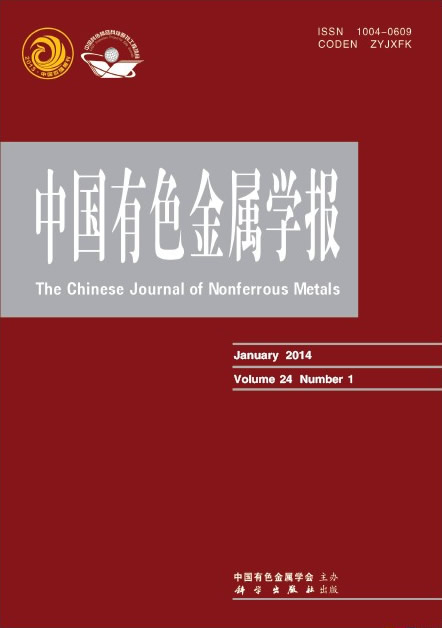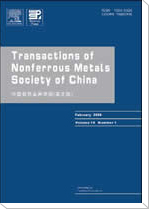(1. 山东大学 材料液固结构演变与加工教育部重点实验室,济南 250061;
2. 国网河南省电力公司 电力科学研究院,郑州 450052;
3. 齐鲁工业大学(山东省科学院) 机械与汽车工程学院,济南 250353)
摘 要: 对12 mm厚的1060纯铝与T2紫铜进行了双面搅拌摩擦焊接,研究了焊接速度对焊缝成形与接头力学性能的影响。结果表明:在搅拌头转速为600 r/min的条件下,当焊接速度为30~50 mm/min时,焊接速度对接头力学性能影响较小,接头均断裂于铝母材一侧;当焊接速度为30 mm/min时,获得了无缺陷的焊接接头;当焊接速度为40~50 mm/min时,接头出现扁平状小孔洞缺陷,此时,由于搅入焊缝的铜与铝混合形成复合材料结构,增强了焊缝性能,因此,其接头强度仍高于纯铝母材的;当焊接速度超过60 mm/min时,热输入降低引起材料流动不足,在接头内形成贯穿焊缝的孔洞缺陷,使接头承载面积减小,抗拉强度降低。搅拌区中部受到搅拌头两次热力搅拌作用,硬度最高。此外,由于第一道焊缝引起工件变形,在相同下压量的情况下,第二道焊缝相对于第一道焊缝压力略低、热输入较小,使得焊缝底部(即第二道焊缝)的硬度低于焊缝上部(即第一道焊缝)的,且第二道焊缝更易出现孔洞缺陷。综合考虑焊接效率和接头性能,50 mm/min为最优焊接速度,此时接头性能与铝母材的相当,抗拉强度为75.6 MPa,伸长率为26%。
关键字: 铝/铜异种焊接;双面搅拌摩擦焊;焊缝成形;力学性能;焊接速度
(1. Key Laboratory for Liquid-Solid Structural Evolution and Processing of Materials (MOE), Shandong University, Jinan 250061, China;
2. Electric Power Research Institute of State Grid Henan Electric Power Company, Zhengzhou 450052, China;
3. School of Mechanical & Automotive Engineering, Qilu University of Technology (Shandong Academy of Sciences), Jinan 250353, China)
Abstract:12 mm medium-thick pure aluminum and T2 copper were welded by double-side friction stir welding, and the effects of welding speeds on weld formation and mechanical properties of the joint were studied. The results show that the welding speed has little effect on the mechanical properties of the joints when the tool rotational speed is fixed at 600 r/min and the welding speed is 30-50 mm/min, all the joints are fractured on the base material of aluminum. The defect-free welded joints are obtained at the welding speed of 30 mm/min. While the welding speed is 40-50 mm/min, some flat small void defects appear in the joints. However, the joint properties are still higher than that of the pure aluminum due to the copper mixed with the aluminum in the weld which forms a composite structure and enhances the joint properties. When the welding speed is higher than 60 mm/min, the heat input is decreased, which causes the insufficient material flow and forms a void defect through the weld, reduces the load-bearing area of the joint and decreases the tensile strength of joint. The hardness is highest in the middle of the stirring zone, which is twice thermally stirred by the tool. Furthermore, due to the welding distortion caused by the first-pass welding, the second-pass weld has a slightly lower downforce and less heat input than the first-pass weld at the same plunge depth, making the hardness at the bottom of the weld (i.e. the second-pass weld) is less than that at the top of the weld (i.e. the first-pass weld), and the second-pass weld is more likely to form void defects. Considering both the welding efficiency and joint properties, the optimum welding speed is 50 mm/min. The joint performance is comparable to the base metal of aluminum, the optimum tensile strength of 75.6 MPa and elongation of 26% are achieved at the welding speed of 50 mm/min.
Key words: Al/Cu dissimilar welding; double-side friction stir welding; weld formation; mechanical property; welding speed


